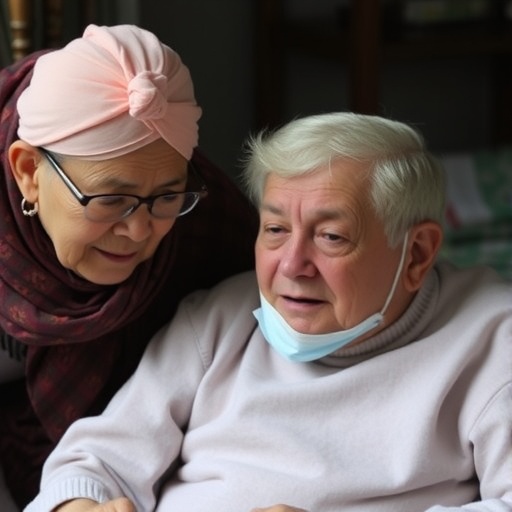Russian scientists have developed a new method for synthesizing para-carboxyplenylsiloxanes, a unique class of organosilicon compounds. The resulting compounds are promising for creating self-healing, electrically conductive, heat- and frost-resistant silicones.
Organosilicon compounds, especially materials based thereon such as silicones, are among the most in-demand products. The outstanding ability to withstand incredible thermal and mechanical stress makes it possible to use silicones for sealing and protecting many items in aircraft and rocket construction. The strength and durability of silicones enable their application in medicine, food industry, and in many other fields of human live.
Though many silicone materials have already been created and their fields of application have been found, scientists believe that their usability potential has not been fully revealed to date. This is due to one of the central problems in the modern chemistry of silicones, namely, the synthesis of organosilicon products with a “polar” (-C(O)OH, -OH, -NH2, etc.) functional group in an organic substituent. Such a moiety allows one to introduce other substituents much more easily, tune the ability of a compound to repel water or to form stable aqueous emulsions, and to impart other “super-capabilities” to a material. This opens quite unique prospects for subsequent modification of these compounds in order to synthesize new copolymers, self-healing and conductive materials, and compounds for the storage and delivery of drugs and fuels. Just a small modification of a compound would also allow one to solve the problem of low mechanical strength and “incompatibility” of silicones with polymers, such as polyesters and others.
With rare exception, the classical methods for synthesizing silicones (first monomers, then polymers) do not allow one to obtain functional organosilicon substrates. As a rule, these methods are either applicable to a narrow range of substrates or are time-consuming, expensive and involve multiple stages.
In recent years, there have been an increasing number of publications on the oxidation and functionalization of organic compounds involving molecular oxygen, i.e., a “green”, simple and available oxidant. A number of industrially important processes already rely on this approach. However, despite all the advantages, these processes generally feature low selectivity and require rather drastic conditions (elevated temperature, high pressure, etc.).
A team of scientists from A.N. Nesmeyanov Institute of Organoelement Compounds of the Russian Academy of Sciences (INEOS RAS), in collaboration with colleagues from the Russian Federation, used a combination of a metallic and organic reaction accelerators (catalysts), which allowed them to solve these problems: the reaction conditions were softened and high process selectivity was achieved. The reaction occurred with involvement of molecular oxygen, in liquid phase and at temperatures slightly above the room temperature, whereas many industrial processes are performed in gas phase under drastic conditions. Even now, the method can be scaled to gram amounts in order to produce a required compound. According to the scientists, this is very important since it is far not always that chemists can offer a reaction that can be used for applied purposes already tomorrow.
“Thus, we suggested a highly efficient method based on aerobic metal- and organo-catalyzed oxidation of starting para-tolylsiloxanes to para-carboxyphenylsiloxanes. This approach is based on “green”, commercially available, simple and inexpensive reagents and employs mild reaction conditions: molecular oxygen as the oxidant, a process temperature of 40-60°?, atmospheric pressure”, – says Dr. Ashot Arzumanyan, the leader and one of the contributors of this study, Senior Scientist of the Laboratory of organosilicon compounds named after K.A. Andrianov, INEOS RAS.
Furthermore, it has been shown that the suggested method is applicable to the oxidation of organic derivatives (alkylarenes) to the corresponding acids and ketones, as well as hydridosilanes to silanols (and/or siloxanols).
The scientists also studied whether materials can be obtained on the basis of para-carboxyphenylsiloxanes, including an analogue of such an industrially important polymer as PET that is used, for example, to bottle water and other beverages, to obtain fibers for clothes and for technical applications, etc.
“The compounds that we obtained open prospects for the creation of self-healing, electrically conductive, heat- and frost-resistant and mechanically strong silicones. They can also serve as a base for developing new hybrid materials that may find use in catalysis, drug delivery, fuel storage, and in other fields of science, technology and medicine”, Ashot notes.
###
The studies were performed by scientists from INEOS RAS in collaboration with colleagues from V.A. Engelgardt Institute of Molecular Biology, N.S. Enikolopov Institute of Synthetic Polymeric Materials, and N.D. Zelinsky Institute of Organic Chemistry of the Russian Academy of Sciences.
This study was supported by a grant of the President programme of research projects of the Russian Science Foundation (RSF). The results of studies have been published in the Journal of the American Chemical Society.
https:/
Media Contact
Ashot Arzumanyan
[email protected]
http://dx.




